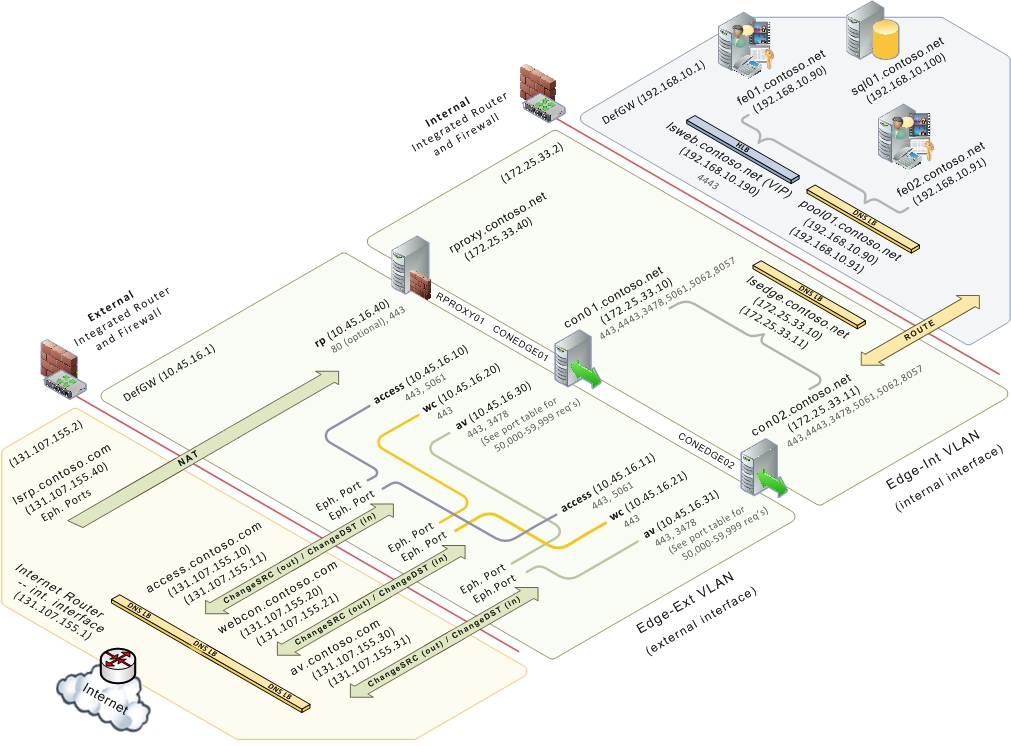Topic Last Modified: 2010-12-09
In the Edge Server pool topology, two or more Edge Servers are deployed as a load-balanced pool in the perimeter network of the data center. Domain Name System (DNS) load balancing is used for traffic to both the external and internal Edge interfaces.
If your organization requires support for more than 5,000 Access Edge service client connections, 1,000 active Lync Server Web Conferencing service client connections, or 500 concurrent A/V Edge sessions, and/or high availability of the Edge Server is important, this topology offers the advantages of scalability and failover support.
For simplicity, the following figure does not show any Directors deployed but in a real world production deployment they are recommended. For details about the topology for Directors, see Components and Topologies for Director. The reverse proxy is also not load balanced. If it was, it would require a hardware load balancer. DNS load balancing is not an option for load balancing reverse proxy traffic.
 Note: Note: |
|---|
| For clarity, the .com DNS zone represents the external interface for both reverse proxy and consolidated edge servers, and the .net DNS zone refers to the internal interfaces. Depending on how your DNS is configured, both interfaces could be in the same zone (for example, in a split-brain DNS configuration). |



